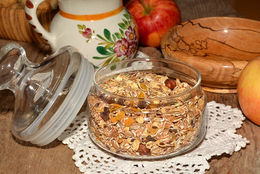
OATS
SOURCE CANADIAN
HIGH-QUALITY MILLING OATS + GLUTEN FREE VARIETIES
PGP MEMBER OFFERINGS
Offerings listed here are readily available for export from our core producer network, but any crop-type / volume can also be procured
Total Prairie Harvest Volume Estimates (Oats): 4 million MT
(Prices are based on latest shipping quotes, and are subject to change)
FOR ALL INQUIRIES, CONTACT SUPPORT@PRAIRIEGRAINPROTAL.COM

5,000 T
MILLING OATS
APPROXIMATE LANDED COST TO ASIA PACIFIC:
$400 to $450 USD PER METRIC-TON
Lab report can be provided on request
FOR ALL INQUIRIES, CONTACT SUPPORT@PRAIRIEGRAINPROTAL.COM
CANADIAN MILLING OATS
FEATURED OAT APPLICATIONS
(hover to stop slide-show)

Canadian Oats Overview
Production:
Due to favorable soil, climate, and moisture conditions for oat cultivation, Canada consistently ranks among the top oat-producing countries in the world. Canada is the world's largest exporter of high-quality oats, supplying milling oats, pony oats, and high-yielding feed oats
Varieties:
Canadian oat varieties are known for their adaptability, yield potential, disease resistance, and quality. Popular oat varieties grown in Canada include AC Morgan, CDC Dancer, CDC Ruffian, and CDC Haymaker, among others
Quality:
Recognized for their excellent quality, attributed to strict agricultural practices, rigorous quality control measures, and advanced farming techniques, Canadian oats are often plump, have a high kernel weight, and possess favorable characteristics for milling, processing, and consumption
Health Benefits:
Oats are renowned for their nutritional value and health benefits. They are a good source of dietary fiber, vitamins (such as thiamin and folate), minerals (including magnesium, phosphorus, and zinc), and antioxidants, and have been linked to various health advantages, such as improved heart health, regulated blood sugar levels, and enhanced digestion
Sustainability:
Canadian oat production emphasizes sustainable agricultural practices, including crop rotation, soil conservation, water management, and responsible pesticide use. These practices contribute to the sustainability and environmental stewardship of oat cultivation in Canada

Quality Assurance
Various measures and standards ensure that the oats produced and exported from Canada meet specific quality criteria; production is overseen by The Canadian Grain Commission (CGC), which establishes and enforces grading standards for moisture content, weight per bushel, purity, foreign material, kernel size, and color. The grading process ensures consistent quality and facilitates fair trading practices
Oat samples are collected to test quality and evaluate parameters such as protein content, oil content, starch content, fiber content, and moisture content, thus determining suitability for specific uses and providing information for grading and pricing
Regular testing and analysis at different stages of production, processing, and storage ensure that quality standards are maintained, including physical inspections, laboratory analysis, and sensory evaluation
Canadian oats are tracked throughout the supply chain, and documentation and record-keeping systems help maintain traceability, ensuring that oats can be traced back to their origin, and allowing for transparency and accountability throughout
Rigorous food and safety standards ensure compliance with regulations, such as pesticide residues, mycotoxins, heavy metals, and other contaminant, and grading standards, quality testing, quality control programs, traceability, food safety standards, certifications, and ongoing research and development all contribute to make Canadian oats the best possible choice




























